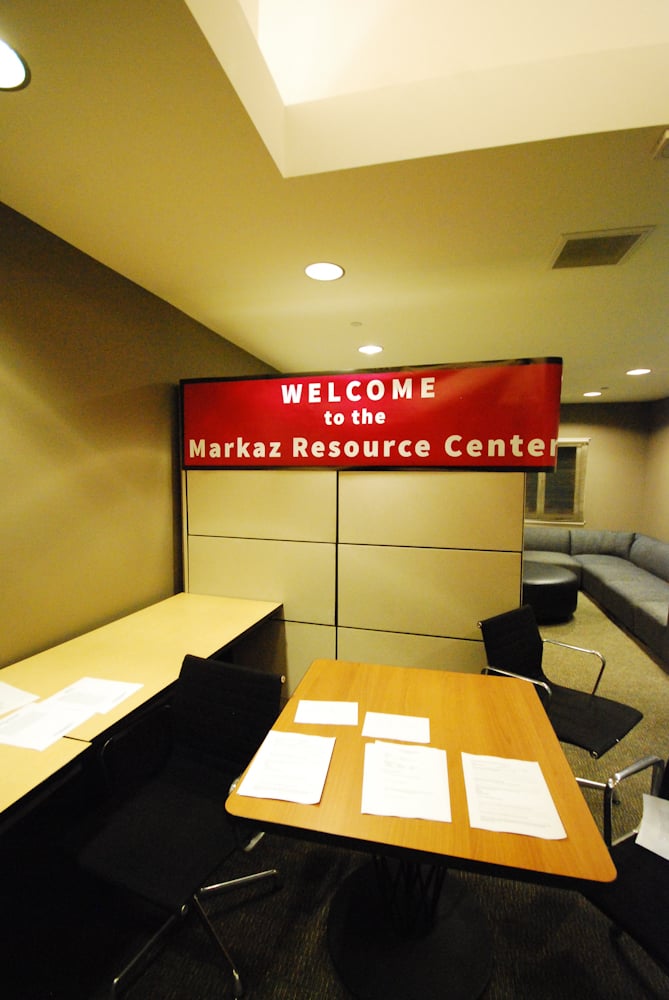Tomorrow, the Markaz: Resource Center for Engagement with the Cultures and Peoples of the Muslim World will open its doors in the Nitery Building in Old Union after more than a decade of collaborative discussions between students, faculty and University administrators.
The center’s goal is to offer a place where students can learn about Islam and the diverse countries and cultures that make up the Muslim world.
Hana Al-Henaid ‘14, president of the Muslim Student Awareness Network (MSAN), played an integral role in creating the center. She took action after noticing Stanford’s lack of resources on Muslim culture.
“There really isn’t a physical space on campus where students can go if they’re just interested in doing research in the Middle East or if they’re interested in Southeast Asia,” Al-Henaid said.
Stanford has many ethnic-themed dorms and community centers around campus, but until now none of them have been specifically designed for Muslim students.
Sayeh Fattahi ‘14, vice president of MSAN, stated that almost every top-10 or top-20 ranked university in the nation except for Stanford offers a Muslim student resource.
“A big reason why [administrators] were so eager to help us was because they realized the importance of [a student center like the Markaz],” Fattahi said.
Various events at the center have already been proposed, such as professor talks, film screenings, sessions offering advice about study abroad opportunities and “chai chats” where students can talk about issues in the Muslim world in a more informal atmosphere.
“It’s a center for engagement and learning,” Fattahi said. “At Stanford, only so much of the learning happens in the classroom.”
“What we’re trying to do with the Markaz is have a place where people can learn in a more personal setting,” she added.
All programming at the Markaz will be entirely student initiated because no full-time program associate has been hired to manage events at the center. Al-Henaid said, however, that getting a full-time staff member to work at the Markaz is a long-term goal.
Although the Markaz is located in the Nitery, close to many community centers such as El Centro Chicano and the Native American Cultural Center, those involved with the project decided it would distinguish itself as a resource center, not a community center.
Al-Henaid explained that the services and events held at the Markaz would be more similar to the types held at the LGBT Community Resource Center than its neighboring community centers.
“We want it to be an open space that people are comfortable going to,” Fattahi added.
Both students and administrators have felt the need for a Muslim student center on campus for a long time.
“We definitely saw this as a need on campus so when we were meeting with administrator, they recognized that need too, and they were very receptive to us and worked with us a lot.”
Fattahi, Al-Henaid and other student leaders met with several administrators, including Director of the Office of Diversity and First-Generation Programs Tommy Lee Woon, Vice Provost of Student Affairs Greg Boardman, Vice Provost for Undergraduate Education Harry Elam, Provost John Etchemendy Ph.D ‘82 and President John Hennessy, to discuss the possibility of the center.
These initial student meetings with administrators resulted in several proposals and the designation of two rooms in the Nitery for the Markaz. The Markaz is classified as a Stanford University center and therefore is not officially organized or run by any particular student group.
“It was a very collaborative process…it was kind of the melding of [students’ and administrators’] visions that created the Markaz,” Al-Henaid said.
The grand opening celebration, featuring welcome speeches by students, administrators and faculty will begin at 6 p.m. tomorrow at the Nitery in Old Union.
Contact Mary Harrison at [email protected].
